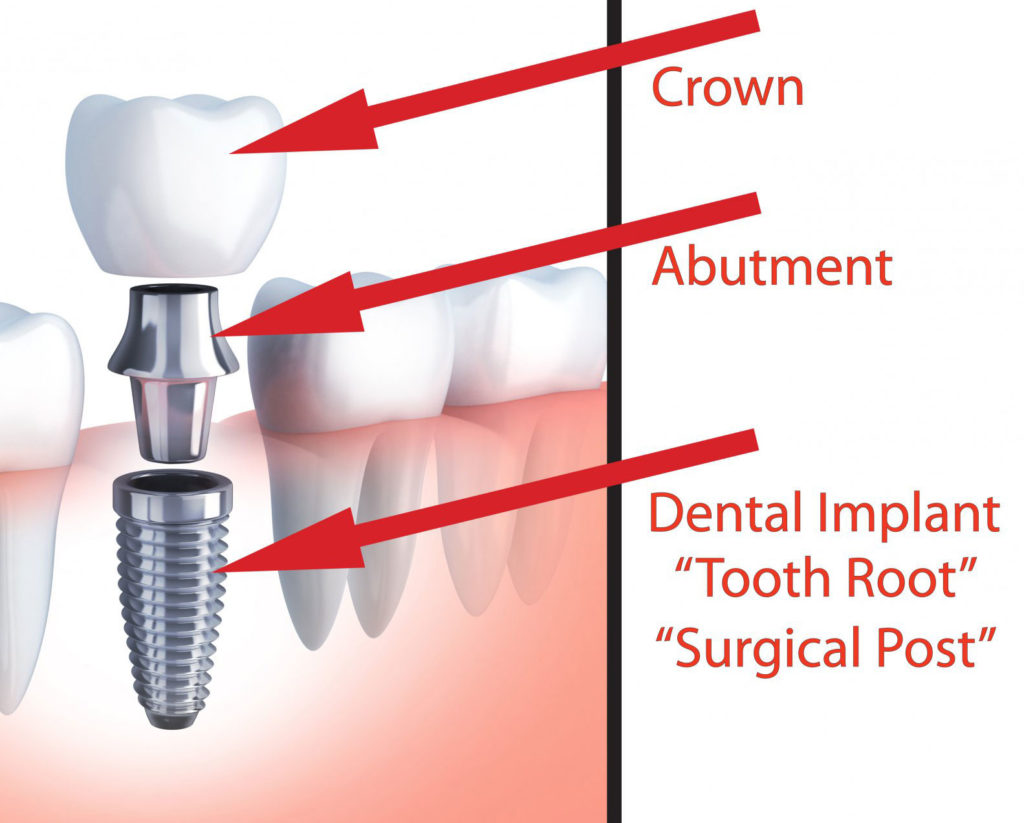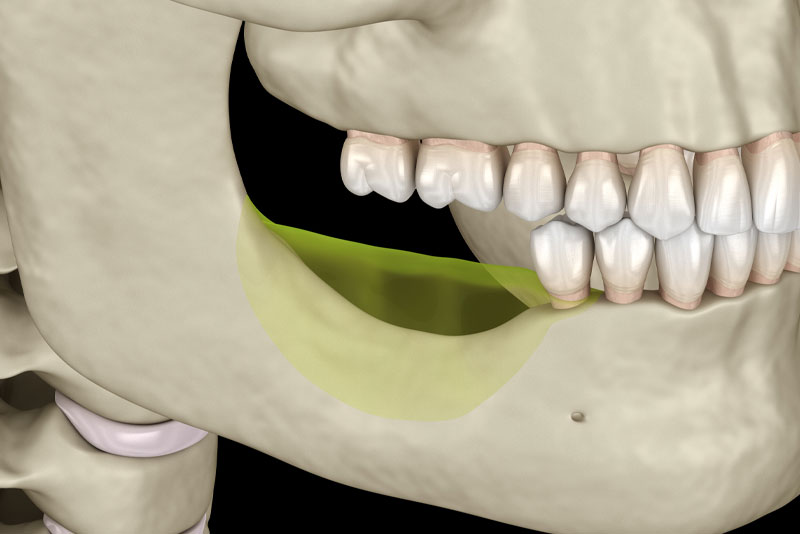It has been so long since you had your tooth extracted that you can’t quite remember the exact number of years. At that time, the common options for replacing an extracted tooth were either a dental bridge or a partial denture. However, neither of these options are reliable long-term, and certainly not for decades of use without needing repairs or replacement. By choosing to not replace your tooth with a bridge or partial, you’ve had to live with a gap in your smile and might have noticed a shift in the teeth surrounding the empty socket. With today’s modern solution — dental implants — you know you can have a reliable and long-lasting tooth, but is it too late? If you have good oral health, the answer is most likely no! You may have to undergo additional procedures first, however.
How Do Dental Implants Even Work?
Dental implants are made up of three components — post, abutment, and restoration — that mimic the function of natural teeth. Surgically fastened to your jawbone below the gums, Dental Implants act as a stable platform onto which artificial teeth can be mounted. (1)
The Implant Post
Taking the shape of a screw, implant posts are embedded through the gumline into the jawbone just like the roots of natural teeth. The implant post is typically made of a biocompatible material, such as titanium, so that it fuses with the bone.
The Abutment
This component is installed after the post, connecting to the top of the implant post provides a connection to whatever dental restoration you have in mind.
The Dental Restoration
These are dental crowns, bridges, overdentures, and full arches of teeth to simulate the natural aesthetic and function of a mouth.

How Does Your Missing Teeth Affect This?
When you have a tooth extracted, your jawbone will – overtime – shrink in the area where you are missing your teeth. In as little as a year, you could be missing most of your supporting jawbone mass in the missing area (2)! But this is not the end for you! There are procedures to get you the results you need neitherless.

Bone Grafting Procedure
If you are missing pieces of your jaw after a tooth extraction, you may need to undergo a bone grafting procedure to build up your bone before dental implants can be safely placed. Having the proper levels of bone also ensures better aesthetics as the natural gumline will be at the same height as the surrounding teeth.

Orthodontic Procedures
Even a year after losing a tooth can have your surrounding teeth shifting as the bone resorbs at the site. If it has been years, these teeth may be too out of place or have sunk into the empty tooth socket, leaving no room for a dental implant. A more defined space to place your dental implant and straighter teeth overall will provide the best environment for getting a new tooth. Plus, having a full set of straight teeth will look great, too, helping to further boost your confidence.

Schedule your appointment
Ready to learn more about how dental implants can replace your missing tooth? Get your beautiful new smile today by calling our doctors, Dr. Edward Halusic and Dr. Kent Hamilton! We have an office in Mt. Pleasant, PA ready to be contacted any time at (724) 723-8921. Alternately we have another office in Greensburg, PA that can be called at (724) 723-8918! Can’t call right now? Schedule an appointment online! Don’t wait for your brand new smile any more!
Our References
- (1) What is a Dental Implant?, Colgate, https://www.colgate.com/en-us/oral-health/implants/what-are-dental-implants
- (2) Changes in the Jaw Bones, Teeth and Face after Tooth Loss, Implant Dentistry Institute, http://www.implantdentistryinstitute.com/pdfs/Changes%20in%20the%20Jaw%20Bones.pdf


